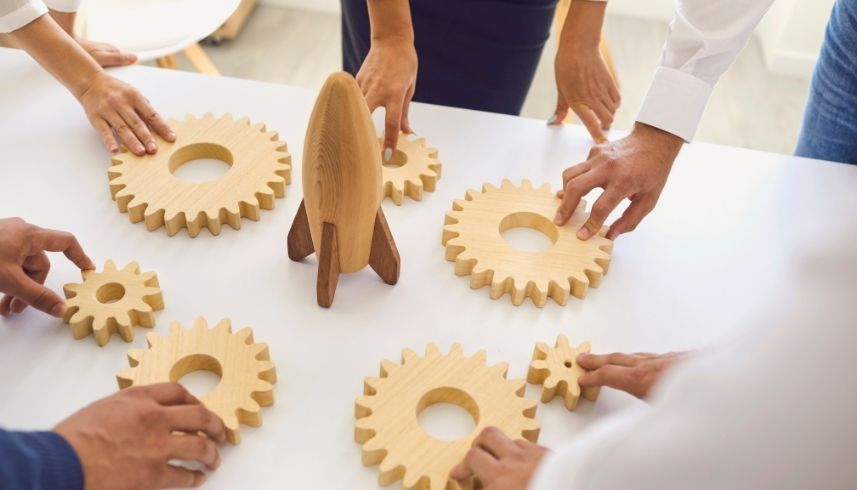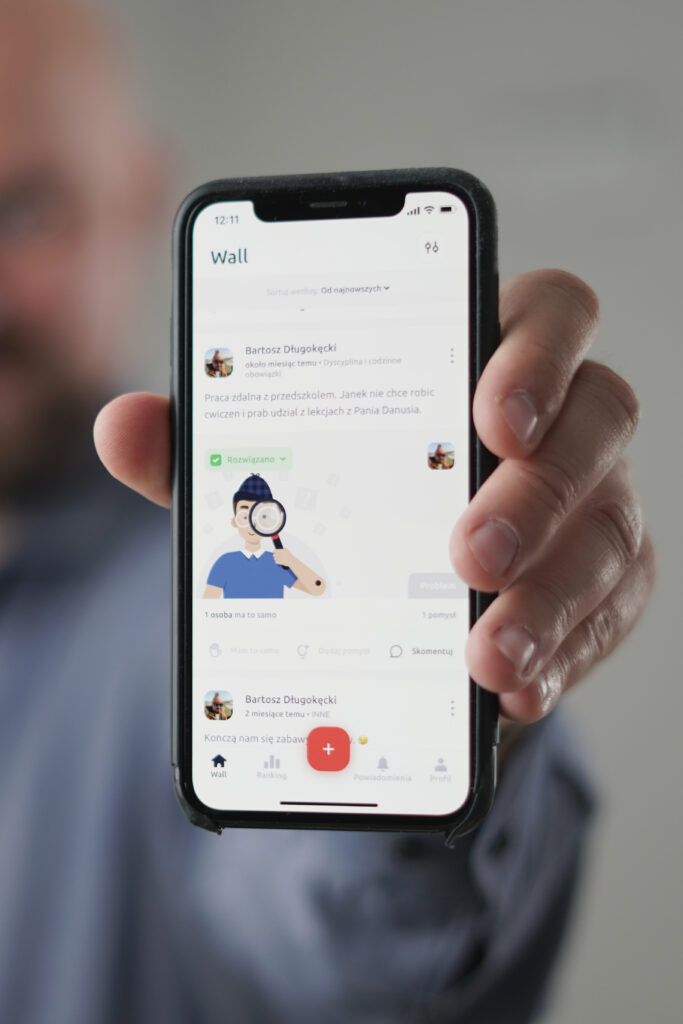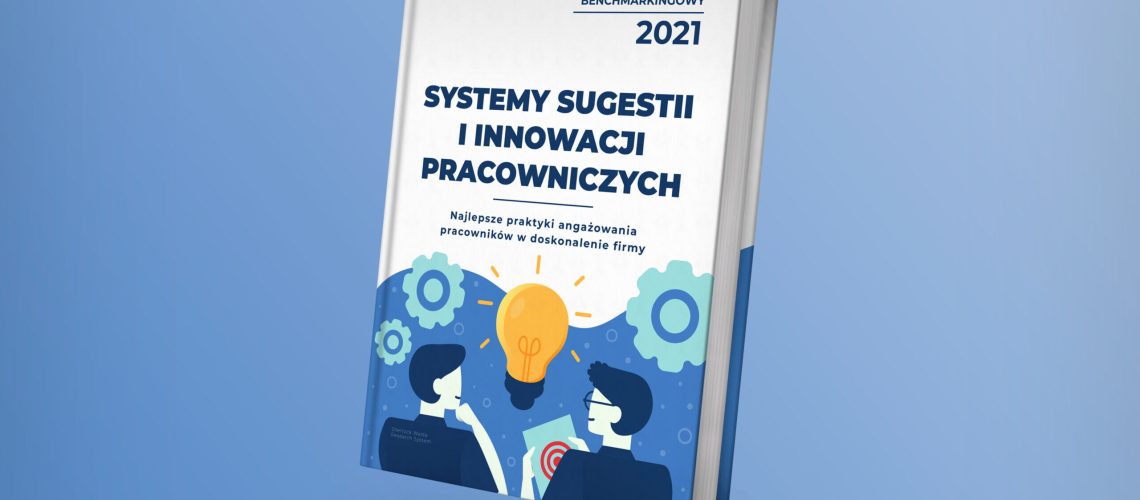More than 70% of companies have or once had an Employee Suggestion System, also known as a Kaizen system. It is a seemingly easy, rational and self-funding tool. Employee Suggestions usually take off with great pomp. An avalanche of ideas for new improvements flows in on a good day. The system becomes a certain part of the organization's work culture. A few months pass and the system pivots or slowly dies. Why? At Sherlock Waste we decided to find out.
Table of Contents:
- How did we study Employee Suggestion Systems?
- The most shocking finding - the systems induce only one in three employees to be active;
- Respondents say the problem is "low commitment." But this is only a symptom.
- The depths of the system's problems
- Will technology turn problems into solutions?
See also: How do you create innovation at a distance?
In the article:
The key is time to guide employees through the processes. First, the time to react to an idea second, the time to implement ideas. The latter is getting 20% worse than 10 years ago.
How to break down the system? First, let's start with the problems. Second - let everyone in the company see on a smartphone what proposals for change are being made. Third - let everyone propose solutions. Fourth - let's remove the bureaucracy - let's launch it into the cloud.

How did we study?
The study is a summary of 250 surveys, completed on-line, in 2021, by companies interested in Employee Idea Systems. 54% of those surveyed were from the manufacturing sector, with the remainder representing service companies. More than 70% of the questionnaires were filled out by leaders and managers of companies of all sizes: from microenterprises to giants. We asked the respondents 35 questions. We looked at the reasons for implementing the system, its effects, prescriptions for long-term success, technical details and challenges they encountered in their daily work.
A brutal clash with reality
Over the years, the reason for implementing the Suggestion System has changed. In the past, it was more common to eviscerate savings and increase efficiency and optimize processes. Today, these factors are only in 4th and 5th place. On the podium are employee-focused goals: increasing engagement, strengthening the Lean culture, and in first place (60.3%) comes "Leveraging employee potential and knowledge."
Despite this, decisions on submitting ideas are made by only one in three employees. Taking into account that statistically 5% submit ideas even without the Suggestion System, the whole action results in activating only about 25% of program participants. Maybe that's why, when we asked about the biggest real benefits of employee systems - the first position, however, jumped to the first place... process improvement.
Over the years, the reason for implementing the Suggestion System has changed. In the past, it was more common to eviscerate savings and increase efficiency and optimize processes. Today, these factors are only in 4th and 5th place. On the podium are employee-focused goals: increasing engagement, strengthening the Lean culture, and in first place (60.3%) comes "Leveraging employee potential and knowledge."
Despite this, decisions on submitting ideas are made by only one in three employees. Taking into account that statistically 5% submit ideas even without the Suggestion System, the whole action results in activating only about 25% of program participants. Maybe that's why, when we asked about the biggest real benefits of employee systems - the first position, however, jumped to the first place... process improvement.
But why are problems reported by so few people!
The biggest challenge of Suggestion Systems, according to respondents, is "Lack or low employee engagement" (43.9%). Stop, stop... after all, that was supposed to be the main goal of the implementation! So we have a symptom. As befits Sherlock, we take a magnifying glass and go deeper. There must be root causes somewhere. They are! They sit in the 2nd, 3rd and 4th places. Long responsetime to submitted ideas (40.9%), Lack of ability to quickly evaluate and implementation of ideas in a timely manner (34.6%), and lack of commitment and management support (33.3%) - these are three diseases plaguing our employee suggestion programs. How long do we need to respond to an employee's idea? On average, 12 days. It's not about paying the reward.
Submitters expect that within a few (5-7) days there will be feedback on the employee kaizen case suggestion made by the system and an answer on whether the idea has a chance to be implemented. For employees submitting ideas, feedback is important. This is what most Suggestion systems expose themselves to.
Let's take this opportunity to go even deeper. Why does it take so long? Although ideas are most often evaluated by the immediate supervisor (44.7%), but still in many companies the program coordinator, a committee and even board members or owners are responsible for considering proposals. Such a system clogs up very quickly and the consideration of ideas becomes longer. Without a quick decision and answers to questions, it is very difficult to take the next step.
The level of implementation of concepts suggested by employees is also not encouraging. 40% is nearly 20% less than a few years ago. The largest number, 19.4% of respondents, estimated that implementations are less than 10%. And yet pride in a working idea is one of the most important ways to motivate, making people want to submit more.
Want to see all the survey results - Download the report
How to improve the processing and implementation of the employee suggestion system?
Let's start with an issue that is not present in our research. As many as 94% of the suggestion sheets, include a field where employees describe the problem. That's a good thing. But are you sure that an employee's submission of a single idea is the best way to solve a problem? And if not, is our submitter in the habit of juxtaposing his idea with others before pouring it onto the sheet?
Meanwhile, as many as 72% of problem reports in social network-based systems are solved thanks to the ideas of employees other than the person reporting. Not only that - 54% of them are from another team. In this type of system, 86% of invited employees register in the system. And what about activity? It doubles compared to traditional systems. 77% of registered employees become active.
Sometimes it is just reporting problems. Some are even good for that - noticing every imperfection. Others are good at spilling ideas for a solution. Both are appreciated.
So is it time to move away from the now legendary paper applications?

The results show that the paper form still dominates (66.2%). Apps and systems, if anything, serve as a facilitator for entering and evaluating the application. A social system, completely changing the process is only 1.9% for now. In the next few years, however, there will be a big jump in social applications launched by anyone, at any time, on a smartphone. Especially if a system built this way works in tandem with a panel to help evaluate and process applications.
Of course, we will not eliminate paper everywhere. In manufacturing companies, especially with older employees, it is required that there is a paper version of the Employee Ideas System in operation as well. These are often employees who do very important work in the company, and using their experience is extremely valuable. Similarly, in environments where the ability to use smartphones at work is limited. In the latter case, we are not without opportunities. 27% of entries in smartphone suggestion systems are not made at the time, but only... after work.
Will applications that support employee suggestion programs 'crash the system'?
We will find out in a couple of years, with the next edition of the survey. In the meantime, we are already seeing great results with the introduction of Sherlock Waste applications at our clients. We know that people's ideas are extremely valuable, so we encourage companies to take advantage of their employees' creativity and develop the right environment for knowledge sharing.
I encourage you to visit the CASE STUDY tab, where you can see the effects of dynamic decision-making. These are examples of companies where the system of employee ideas began to meet expectations and bring the expected results at the very beginning of implementation. Thanks to the creation of appropriate programs, each company was able to take advantage of the creativity of its employees and ensure the implementation of their ideas and the improvement of the organization.

To successfully implement a suggestion system, several processes must take place, in which all company employees should actively participate. First of all, the focus should be on establishing an organizational culture based on continuous improvement. It should be known to all employees, not only managers, but also people working at lower levels. It is worth ensuring their presence in the process especially when the system is implemented by a manufacturing company. After all, their daily work is one of the most important foundations of the production process and benefits the entire organization. Everyone should take an active part in creating the culture so that improvement activities will bring the expected results. Let them ask questions so they can focus on the shared values they care about in the organization.
It is also worth considering the creation of incentive programs, with the implementation of which it would be possible to convince employees to actively submit comments through the suggestion system. Building this element will provide employees with the security of submitting ideas, and the development of real benefits will increase interest in sharing comments and using the system.
You should also ensure that evaluation criteria are created for all suggestions submitted. They will be an excellent support for the process that employees' proposals must go through, and taking the opportunity will help to systematize them.
Fortunately, you don't have to do it all yourself, alone. We can help you plan the best employee innovation system, train you, be with you at every stage of implementation, plus support you with technology.
We can help you develop an effective system for your company. If you want to learn more about how you can help increase job satisfaction at your company? Contact us, together we will create a ready-made plan to implement at your company - click here
Author of the article: Grazyna Potwora, Transformation Manager Leanpassion






